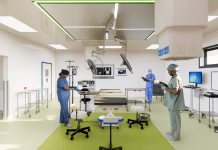On 1 April, the Digital Twin Hub transitioned from the Centre for Digital Built Britain to a new home at the Connected Places Catapult as it looks to accelerate growth and develop new projects across the public and private sectors
The Digital Twin Hub was launched in March 2020 as part of the National Digital Twin programme to provide a voice for the supply and demand of digital twins, foster collaboration, interoperability, adoption and innovation.
In two years based at the Centre for Digital Built Britain at the University of Cambridge, DT Hub membership grew from an initial group of six to over 3,500 individuals representing more than 1,600 organisations from over 77 countries.
The “go to” place to find out more about connected digital twins
The hub has become the “go to” place for those wanting find out more about connected digital twins, while demonstrating the need for a digital twin community and highlighting that collaboration, connection and knowledge exchange are vital to achieving connected digital twins across the built and natural environments.
In March, the CDBB completed its mission on the National Digital Twin programme and from 1 April, the DT Hub transitioned to an industry/Catapult partnership housed at the Connected Places Catapult (CPC), the UK’s innovation accelerator for cities, transport and places.
The move to CPC will allow the hub to accelerate its growth by drawing on the strengths at the wider Catapult Network, including the Digital Catapult, Energy Systems Catapult and High-Value Manufacturing Catapult, to support better engagement with a broad range of innovators across industry and academia, growing the hub’s scale and impact.
The DT Hub has been joined at CPC by two other programmes established by the Centre for Digital Built Britain – the International BIM programme and the Climate Resilience Demonstrator (CReDo) project.
The International BIM programme
The International BIM programme was established to develop a toolkit to drive standardisation and use of Building Information Modelling across construction sectors around the world.
It provided a set of guidance and template documents, aligned with the ISO 19650 series of standards, and comprises key components facilitating implementations of best practice information management processes for organisations at every level of BIM adoption.
The toolkit was developed with input from more than 200 contributors over a three-year period.
Climate Resilience Demonstrator (CReDo)
CReDo is a pioneering climate change adaptation digital twin project that provides a practical example of how connected data can improve climate adaptation and resilience across a system of systems.
The project looks specifically at the impact of flooding on energy, water and telecoms networks. It demonstrates how the owners and operators of these systems can use secure, resilient information sharing across sector boundaries to mitigate the effects of flooding on network performance and service delivery.
Last year, CReDo and the National Digital Twin programme launched a short film, Tomorrow Today, at the COP26 UN Climate Change Conference in Glasgow showing the essential role of infrastructure resilience in the climate emergency. Directed by BAFTA winner Colin O’Toole, Tomorrow Today tells the story of Arthur and his grandson Jack facing the unprecedented Storm Ruby, which has the potential to knock out multiple utility services and threaten lives. The film was produced by Crocodile Media in partnership with Little Monk Pictures.
COP26 also saw the launch of an interactive app, developed by the National Digital Twin programme together with ESRI UK and in partnership with Mott MacDonald, which allows users to explore how connected digital twins can help plan for better reliance in the fictional Sunford City as it experiences a series of severe storms driven by climate change.
Users can explore different scenarios and it demonstrates how connecting datasets and digital twins across organisations and sectors is essential to future infrastructure resilience, as well as achieving net zero.
‘Digital Twin Hub at the forefront of innovation’
Alexandra Bolton, executive director of the Centre for Digital Built Britain, said: “We are thrilled that the DT Hub will continue its mission at the forefront of innovation. We celebrate its achievements and look ahead to an era that will extend cooperation, coordination and collaboration across sectors, and inspire even greater progress towards our vision of enabling people and the planet to flourish together for generations.”
Paul Wilson, chief business officer of the Connected Places Catapult, added: “Connected Places Catapult has been working with the Centre for Digital Built Britain since its inception and has been an enthusiastic member of the DT Hub since 2020, taking a leading role in the Climate Resilience Demonstrator collaboration shown at COP 26.
“We are delighted to be inheriting the work of the hub and look forward to growing the work of this vibrant and passionate community.”
Digital Twin Hub
Twitter: @DigitalTwinHub
LinkedIn: Digital Twin Hub
YouTube: Cambridge Centre for Digital Built Britain














